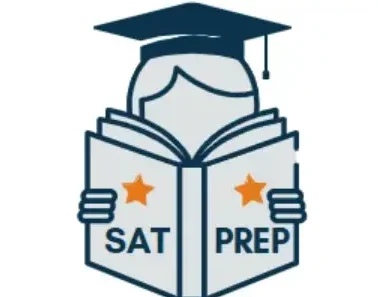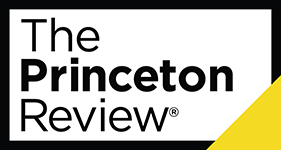The section of the SAT vocabulary words measures your writing skills. It consists of the high-level words that assess your language proficiency. These words are commonly used in academic texts and complex passages.
SAT Reading Practice Questions
Word Meaning in Context and synonyms, like question, are asked in the vocabulary section. Good SAT vocabulary helps you in the reading comprehension and writing sections.
Essential SAT Vocabulary Lists
- High-utility words and academic words are present in the essential vocabulary lists of the SAT.
- These words are used in the SAT reading and writing passages.
- This list plays an important role in understanding the synonyms and antonyms easily.
- Your vocabulary is improved with tailored practice sessions and regular practice.
- Vocabulary lists are also present in the SAT exam preparation book and online resources.
SAT Vocabulary Words 2025
The 2025 vocabulary test will assess your comprehension and context-based understanding skills. These words are very important for the Digital SAT and context clues-based questions. These words are used in the passages to understand the meaning.
Updated vocabulary emphasizes the list of precise and clear communication that is relevant to the test format. Flashcard sets, practice questions, and mobile apps like Quizlet are very helpful for remembering these words.
For the preparation of the digital SAT, the remember of English is very important. These words not only improve your reading, but they also play an important role in understanding grammar and sentences. If your vocabulary is strong, you can easily understand the question. There are some important vocabulary words given below.
Abate
Aberration
Adversity
Altruism
Ambiguous
Belligerent
Candid
Concur
Efficacy
Elucidate
Empathy
Feasible
Fortuitous
Impartial
Lucid
Mitigate
Pragmatic
Scrutinize
tenacious
ubiquitous
Top SAT Vocabulary Words
The SAT vocabulary tests English language comprehension skills. These vocabulary words are used in the reading and writing sesectionsThere are some top vocabulary words in the following: Ambiguous, Anecdote, Emulate, Pragmatic, Resilient, Scrutinize, Altruistic, Superfluous, Vindicate, and Ostentatious. To understand these vocabulary words, regular practice is very important.
Types of Vocabulary Questions on the SAT
Related questions are very important in the reading and writing section. There are four types of vocabulary in the SAT: Information and Ideas, Craft and Structure, Standard English Conventions, and Expression of Ideas.
- Information and Ideas: In this type, you need to understand the words that are related to the passage.
- Craft and Structure: The analysis of the craft and structure also tests your ability.
- Standard English Conventions: In this type, word correction skills are observed.
- Expression of Ideas: In this type, you need to understand the effective and precise words.
Strategies for Learning SAT Vocabulary
- Do regular practice and try to remember the new words and use these words in sentences.
- Make a flashcard in which the example and sentence of the word are provided.
- Solve the vocabulary quiz options and use the vocabulary apps. Quiz apps help to remember words easily.
- Remember the 10 vocabulary words in a day, and also revise these 10 words the next day.
- Try to note the difficult words during the practice.
Resources for SAT Vocabulary Preparation
For the preparation of the SAT vocabulary, there are many famous resources available. With the help of these study materials, you can prepare effectively for the vocabulary. Books like Barron’s and The Princeton Review also provide specific vocabulary lists.
Apps like Quizlet, Anki, and flashcard apps are also helpful in learning vocabulary. Besides that, many online platforms like Khan Academy and Magoosh offer practice exercises for vocabulary.
Conclusion and Recommendations
The correct use of the practice tools is very important for the preparation of the vocabulary. You need to learn the new words by using flashcards, dictionaries, and online resources. You also need to make a timetable for learning the vocabulary. Aspirants can enhance their vocabulary skills with the help of personalized learning and adaptive technology through engaging learning experiences.
FAQ About SAT Vocabulary Section 2025
How to study vocabulary for the SAT?
Use SAT Vocabulary Lists, Create Flashcards, Learn in Context, Set Realistic Goals, and Set Realistic Goals
How to improve SAT Vocabulary Roots, prefixes, and suffixes?
Learn Common Roots, Study Prefixes
- Pre- (before), e.g., preview
- Un- (not), e.g., unkown
- Re- (again), e.g., reconsider
Understand Suffixes
- -er or -or (person who does something), e.g., teacher
- -able (able to be), e.g., manageable
- -ic (about), e.g., historic
Practice with Word Families:
How to practice for SAT Vocabulary Words?
The SAT aspirant practices the SAT vocabulary by the formula of reading extensivelusingUse Vocabulary Apps, practicing in Context, using flashcards, and taking practice Tests.
What vocabulary should I know for the SAT?
The academic context vocabulary for the SAT is very important and mostly comes in the SAT. It includes Ephemeral, Sycophant, Exacerbate, Ubiquitous, etc.
How many SAT vocabulary words are there?
There are no specific Numbers allocated for the vocabulary words that come in the SAT Test. There are 10000 words available that are in the SAT Vocabulary.
How do I improve my SAT vocabulary?
You can improve your SAT vocabulary by accepting the following:
Be Consistent, Learn in Groups, Use Flashcards and Apps, Review and Test Yourself



